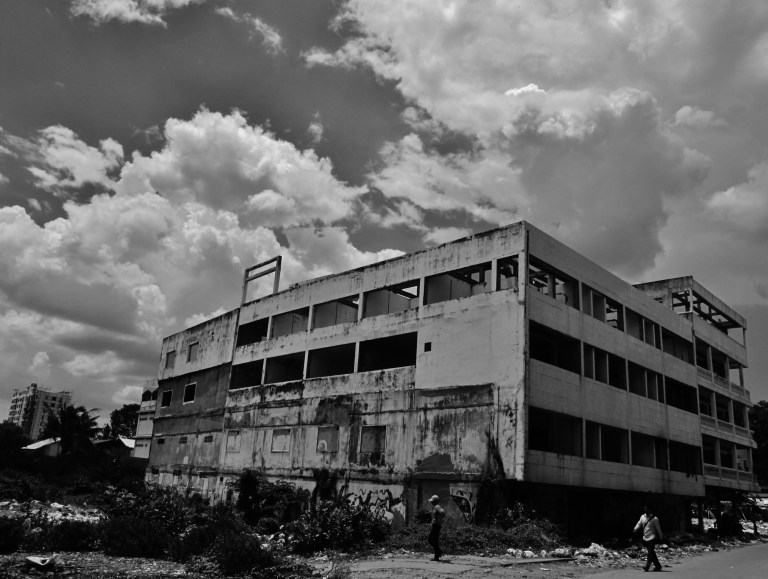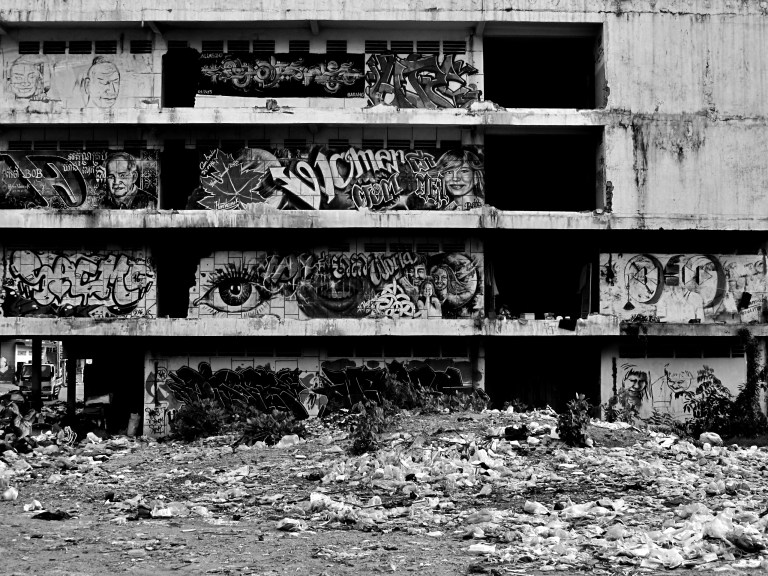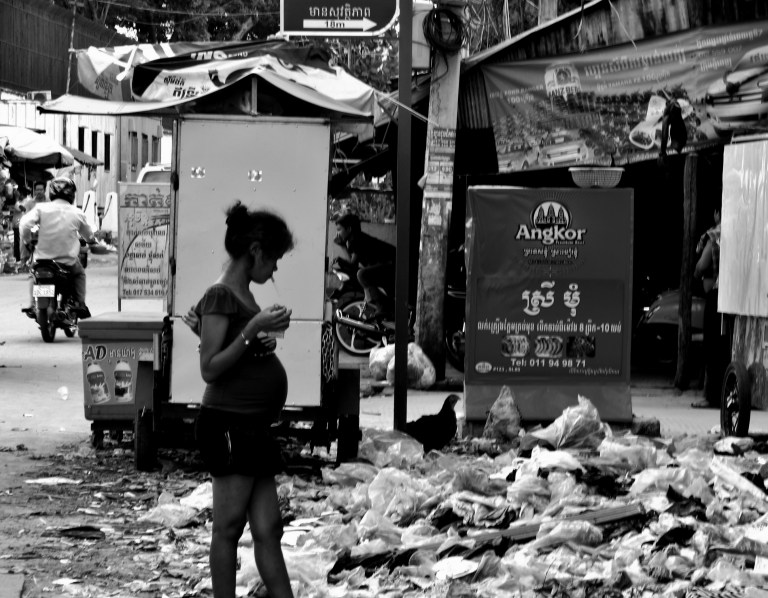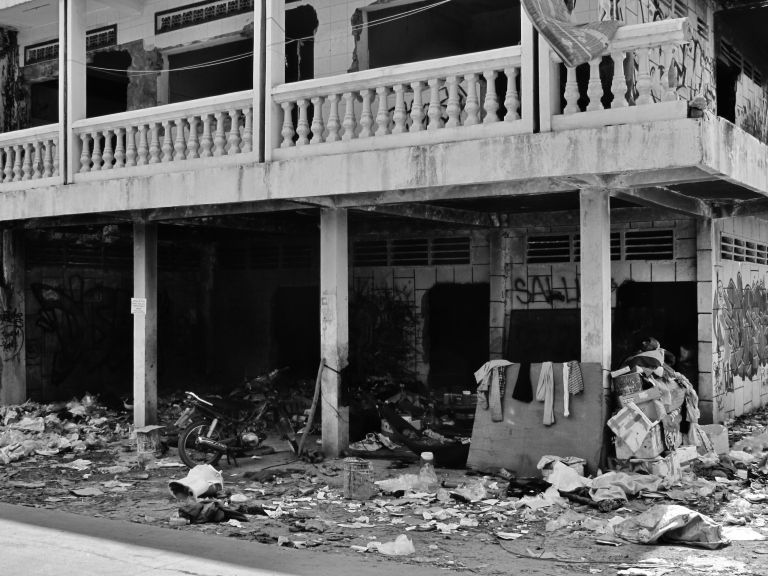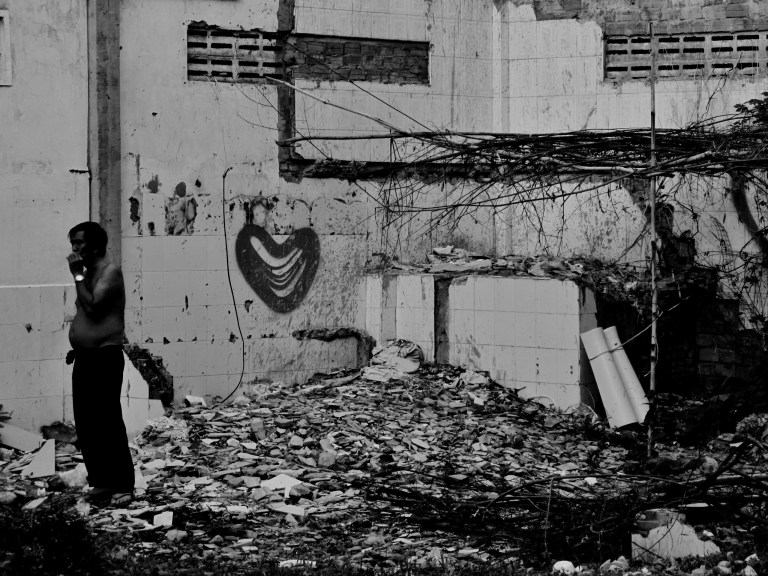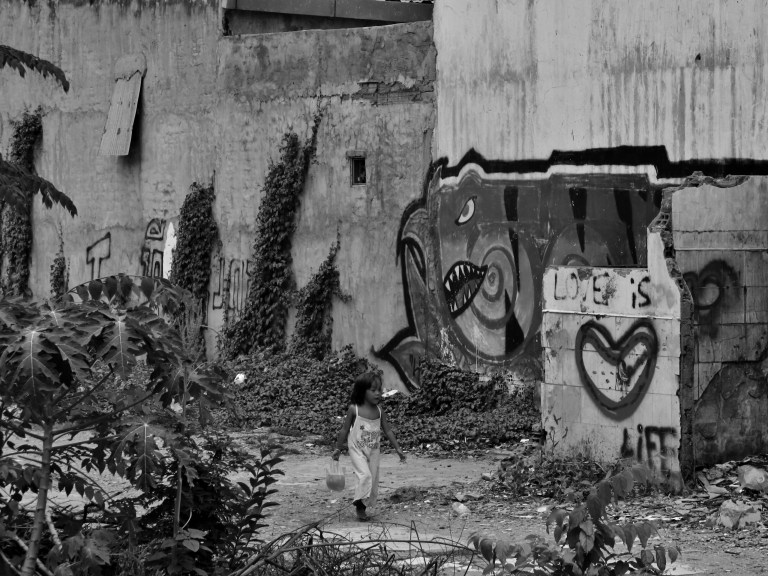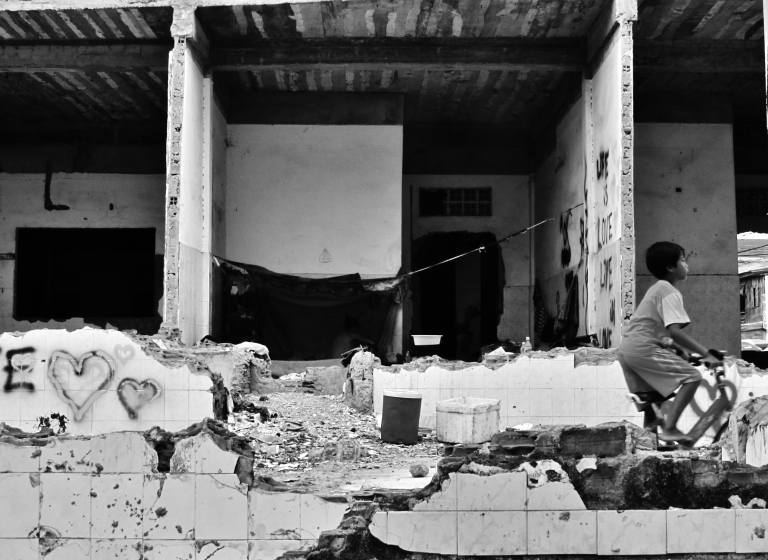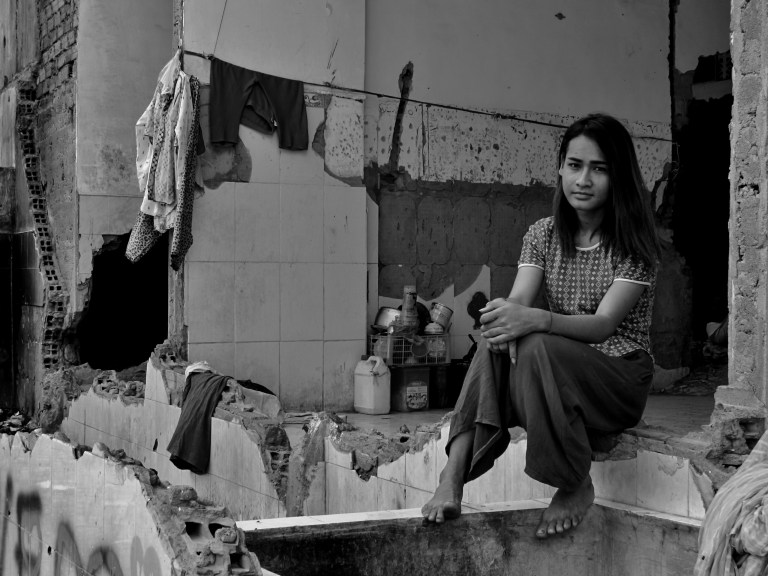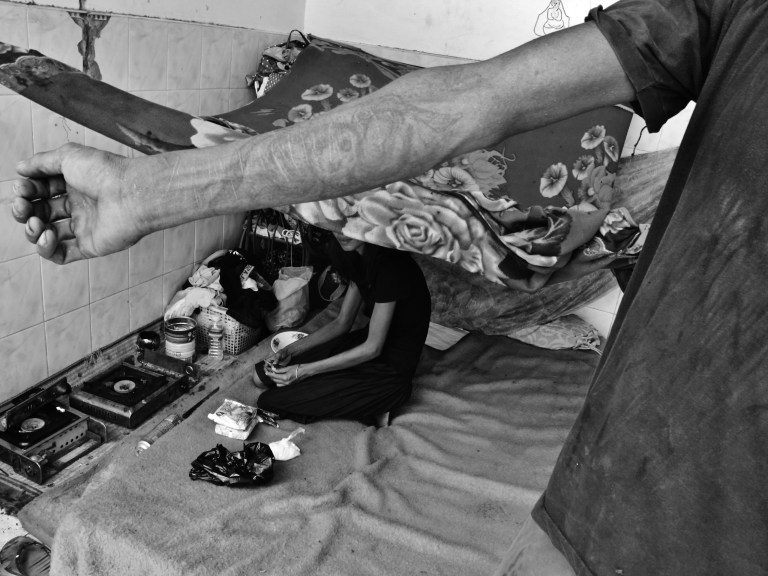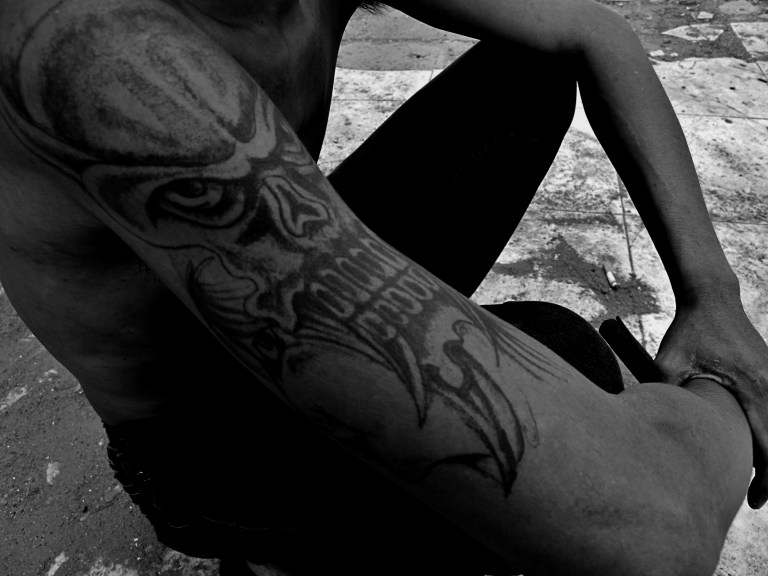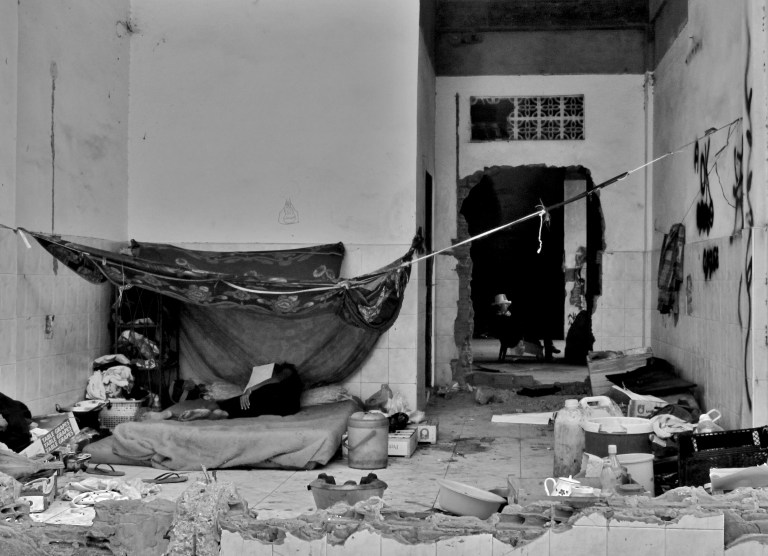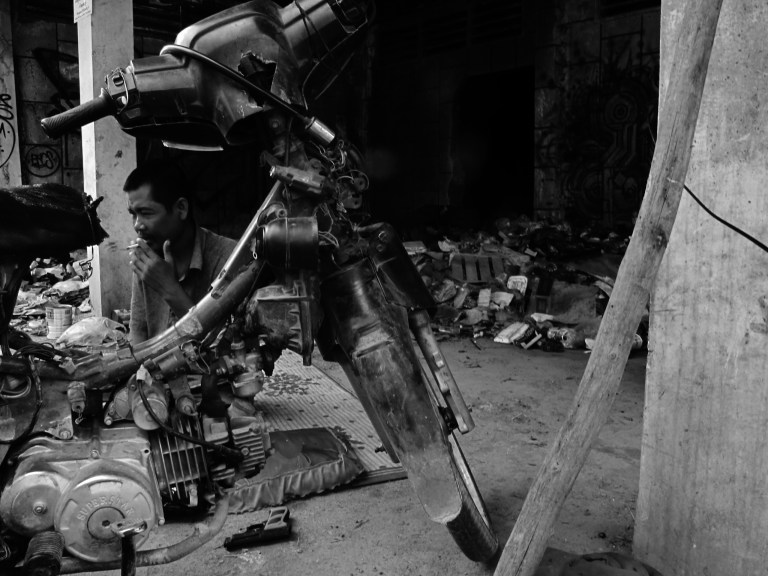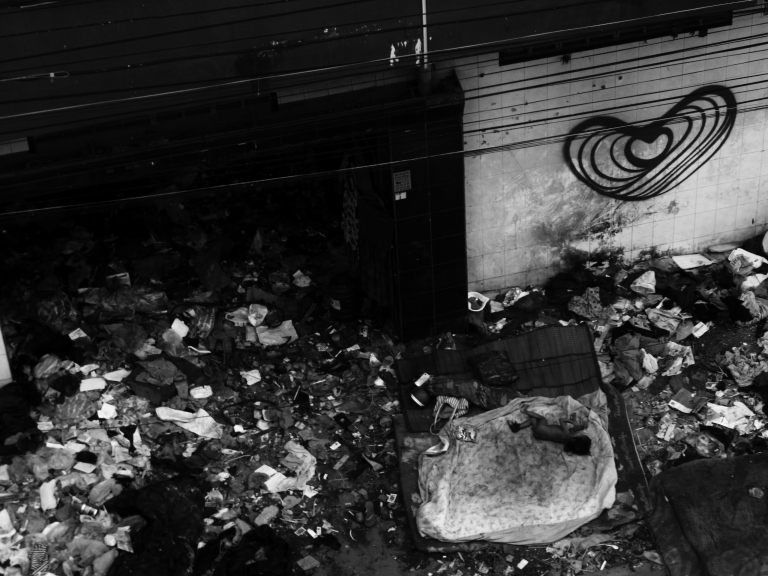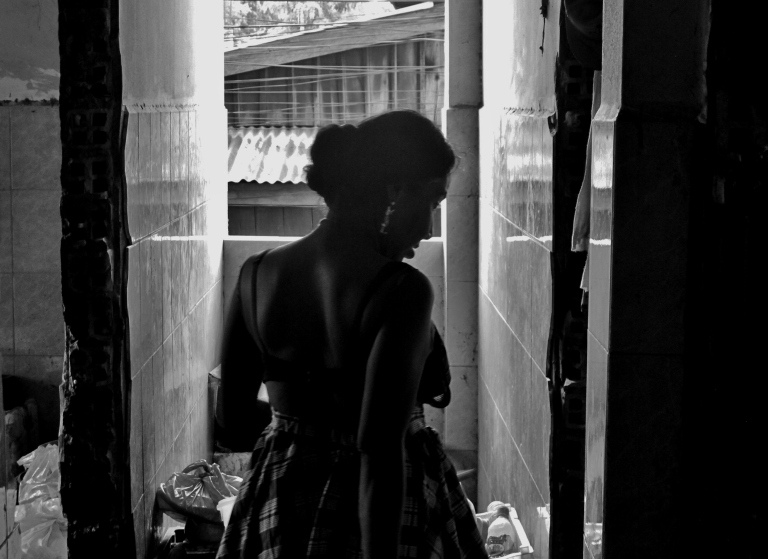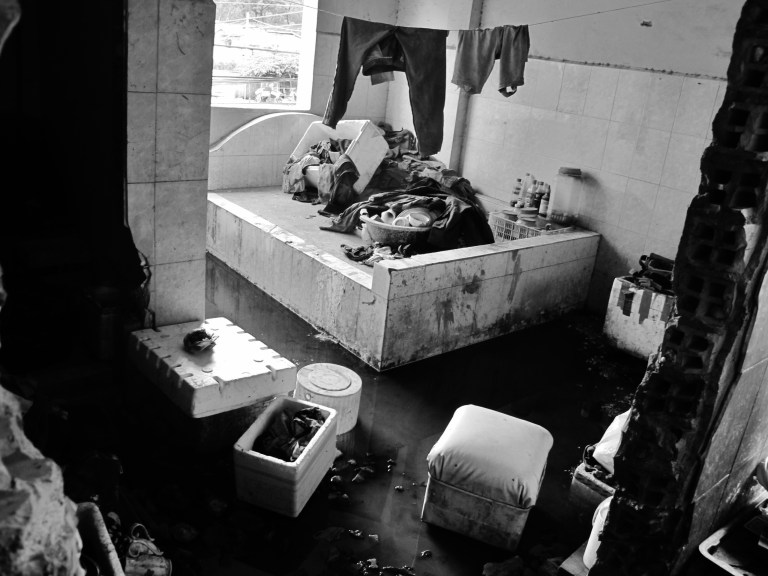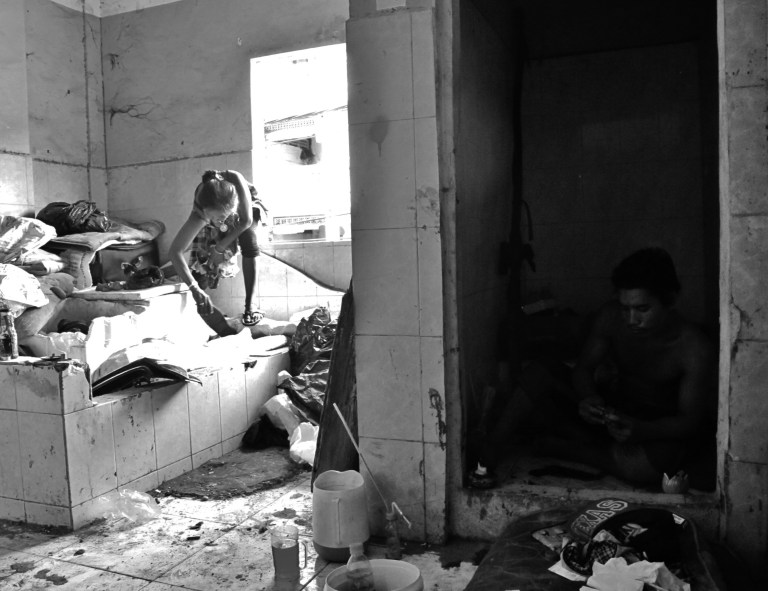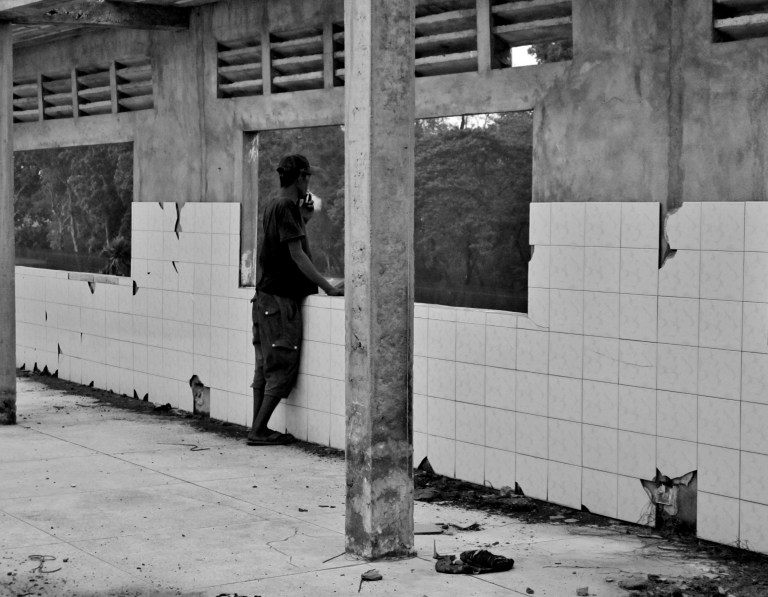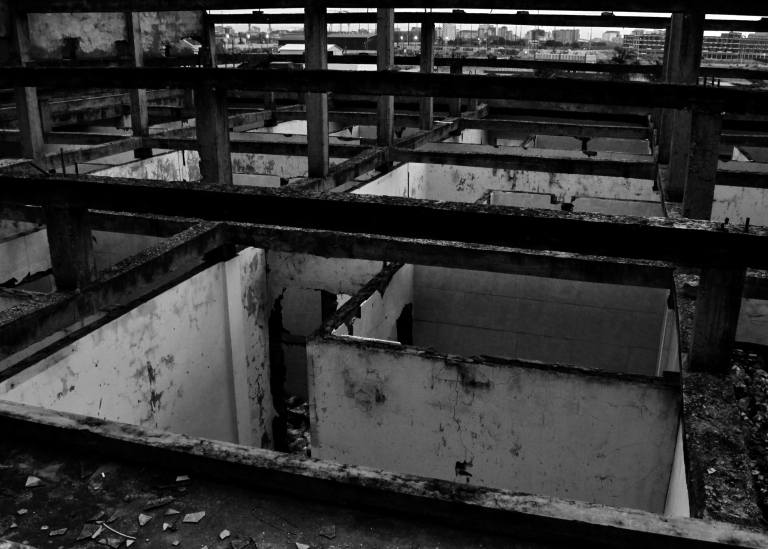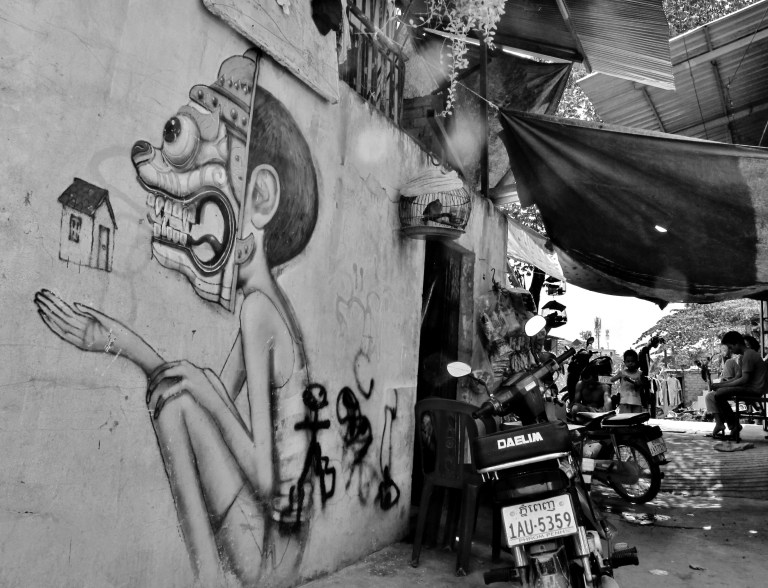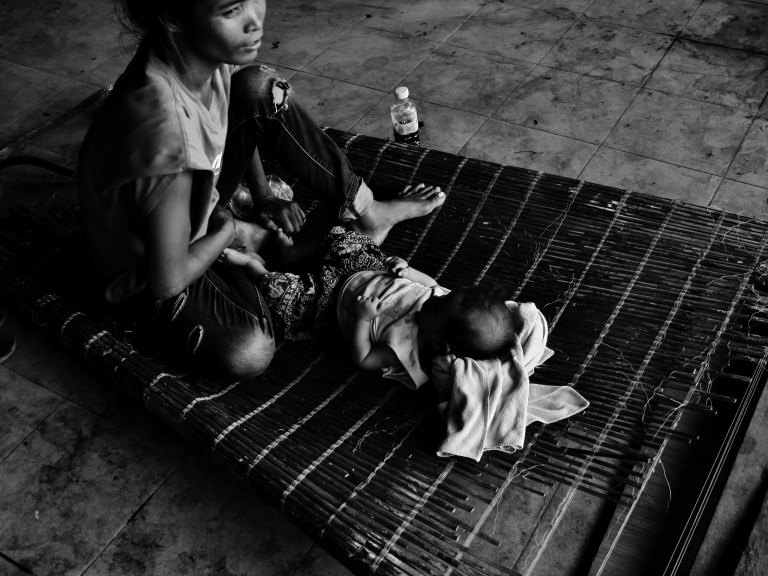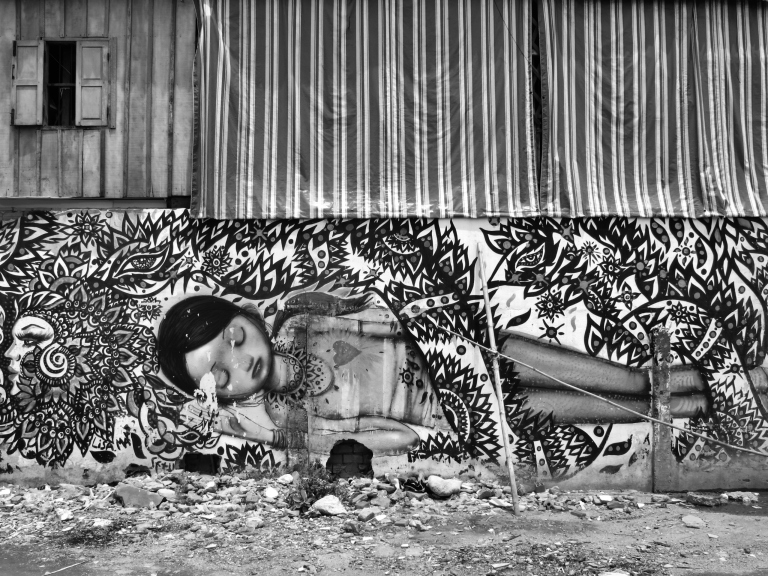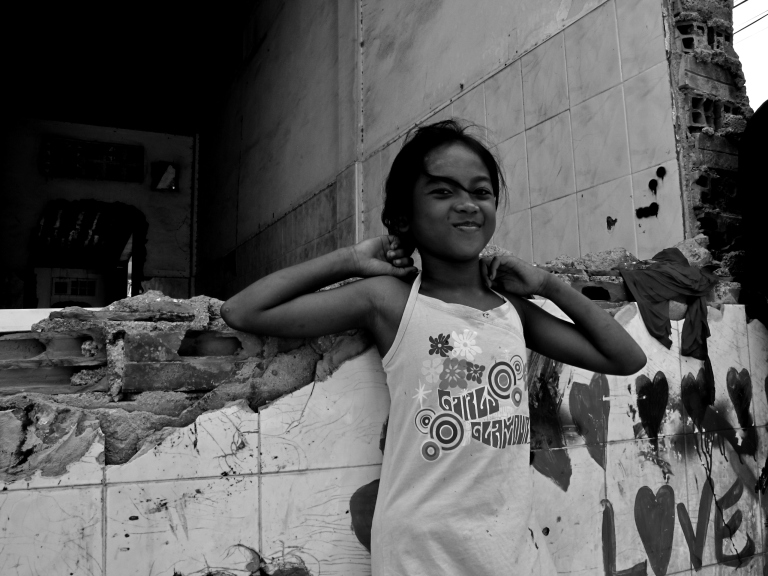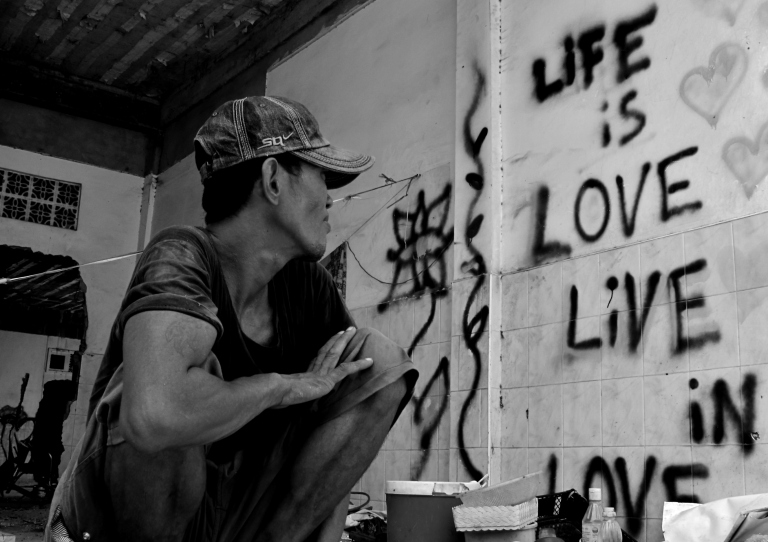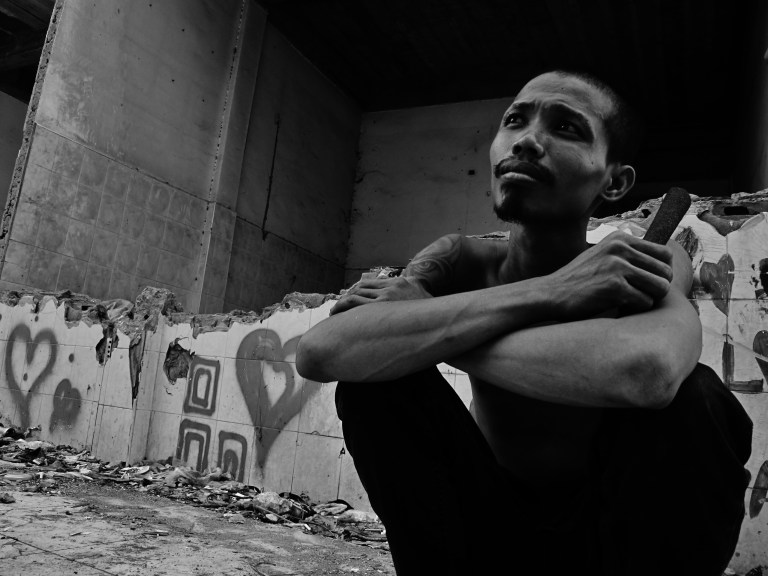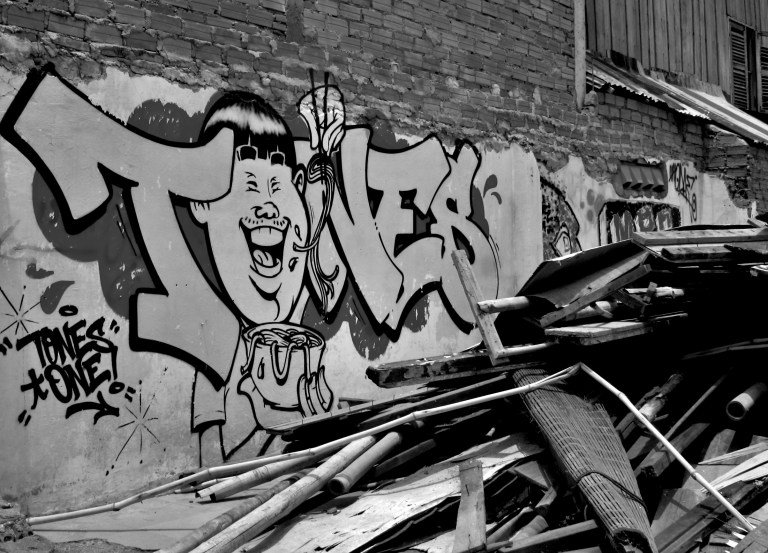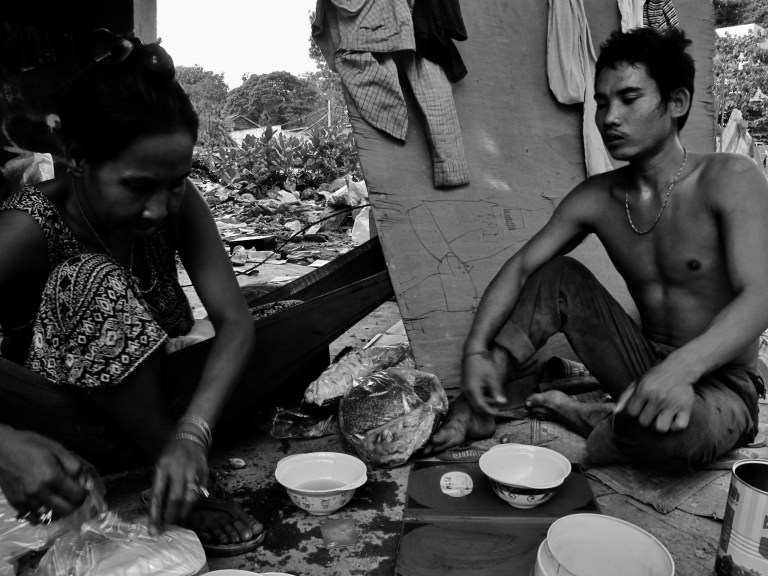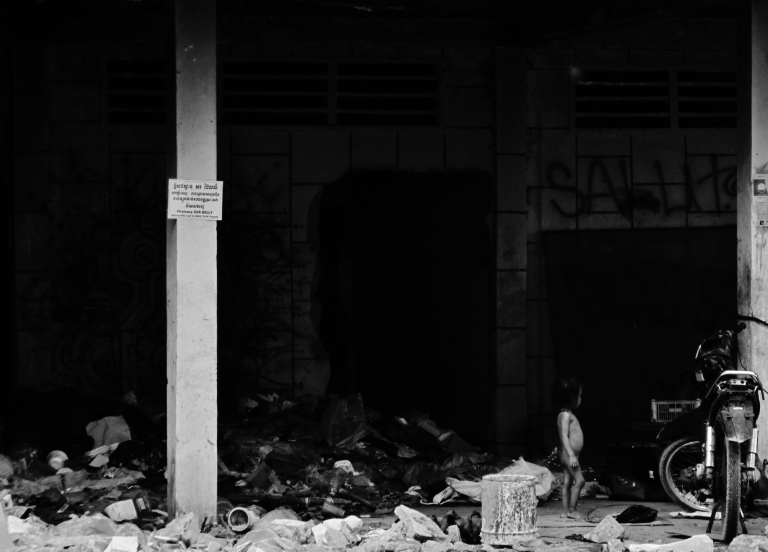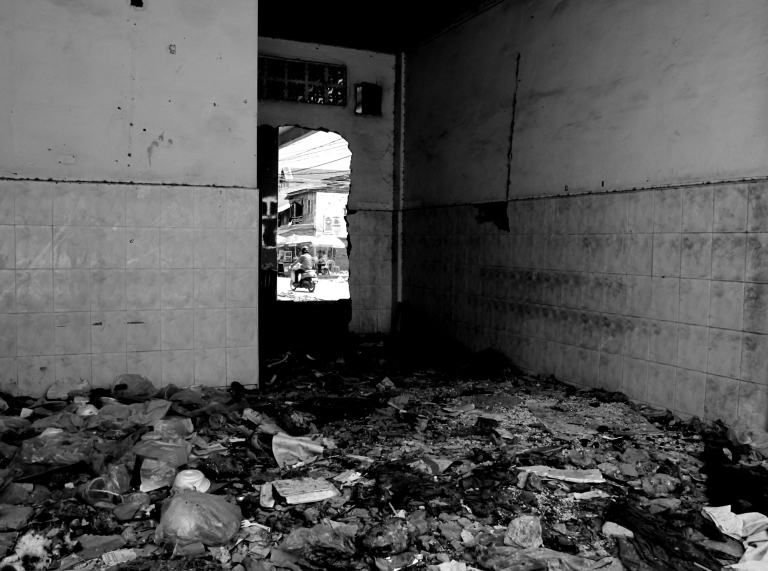Boeung Kak is a strange place. Located in the center of the cambodian capital of Phnom Penh, it had the unique feature (for a city) of being a neighbourhood built around a beautiful lake. Crowds of young backpacker tourists were used to populate its margins, helping a vibrant local economy and its low-income population. Relaxed environment and sunsets on the lake were the common experience here, until the municipality sold it to a company owned by the wife of a ruling party’s senator. Since 2008 the lake had been filled with sand and is now a construction site for high-end buildings, somehow in standby, while around 4000 families (almost 20.000 people) were forcibly evicted from their homes. Nowadays, most of the tourism industry fled, depleting the local economy and the general mood of the community. Nevertheless, some travelers and expats still come and try to maintain the creative atmosphere that was going on in the old days, with street art still populating many walls. Meanwhile some buildings got vacant, with time and lack of maintenance turning them into shady and forsaken sites. That’s when some underpriviliged families started to live in them. This a glimpse of them and their way of living, in black-and-white as an attempt to balance the color on the walls and the lack of it on the ones living inside them.
Their neighbourhood…
…where squatters and artists share the space and the hours. Two different worlds getting together in this forgotten community.
Squatters and artists seem to not interact much, some gaps will always remain unstable land for bridges. But most of the local residents were kind and keen to talk, to show where and how they live. It caught my attention their tattoos, somehow graffities directly on the skin that portrait their own stories and imageries, mirroring what the artists are doing on buildings. Painted outsides for trashed insides; who or what are the squatters in their own bodies?
For most of them the day is just a waiting room for the night to come, the sleeping as an intermission for the way they live.
A woman calls me from the window, willing for someone to talk. Friendly enough to show me around the building and the room where she sleeps, her few english words came from a past marriage with an african man. Now she shares this vacant house with her mentally-challenged brother and some other families.
Trash and flooded floors due to the rainy season compose the environment inside, while on top of the building is possible to see the skeleton of what one day this complex was.
The idea for this series came when I saw this graffity, in my mind emerged this visual metaphor of masked people and empty houses, somehow it gave birth to these kind of questions about the relationship between the foreigner artist crowd and the local residents. How do they see these outsiders coming to paint the walls that cover their abashed way of living? Are the colors from the artworks on the walls bringing some change to their daily mood, some sort of escape from their dark world?
More questions emerged in me. How does it feel to grow up in these conditions? Do the squatters, namely their children, compare themselves with the dreamy images represented in their walls?
From all the local residents, the children are the ones more interested in the activities taking place outside their so called home, joyfully taking brushes from the artists to do their own thing, their own contributions to the expressive atmosphere surrounding this little art ecosystem. Are the words written and the images painted on these walls representing to them some sort of imagined future? Real aspiritions or out-of-reach dreams?
Sometimes the contrast can be too surreal, too difficult to deal. When I saw happy faces with noodle bowls while one family was eating a rotten jackfruit directly from the garbage, I crossed the blurry line between the pure observing and participatory attitudes towards the subject one is photographing. I bought them some rice and vegetable soup, and sit with them to talk while they were enjoying their unexpected meal. What’s ethics in documentary photography is that kind of old debate with no straight answers, a tricky balance to manage. What are the limits of impartiality? Is it acceptable to take photographs while giving nothing back? What about its opposite, do we risk to spoil the authenticity of a picture if we actively engage in its scene?
In terms of livelihood and their manner of surviving, the squatters are, as common in the lowest income populations in southeast asia, earning some petty cash by collecting plastics from the trash to sell for recycling companies, making around ten cents of dollar per kilo of bottles, bags and other plastic waste. Trucks come as well to dump garbage in the surroundings of the buildings, helping to define the kind of scenery they live in. A pugent impact of the consumer culture (which they will never engage on) in their already fragile lives.
The monster of development strikes again?
Media cover on AsiaLIFE Magazine

